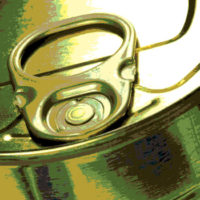The two basic ingredients of any food company's sanitation program are cleaning and sanitizing. The purpose of cleaning is to remove all visible soils from a surface, followed by sanitizing to reduce all invisible soils, such as bacteria, yeasts and molds. But sanitarians in today's food and beverage processing and foodservice operations must accomplish these seemingly straightforward tasks in a more demanding business and regulatory environment than ever before.
Jeff Tolke, Senior Marketing Manager for Food Processing, St. Paul, MN-based Ecolab Inc., the leading global developer and marketer of premium cleaning, sanitizing, pest elimination, and other products and services for the hospitality, institutional and industrial markets, says that to successfully meet these demands, sanitarians in any food industry operation must work hard to attain total sanitation program performance.
"There is no question that sanitation departments in food manufacturing and retail foodservice are under increasing pressure to perform necessary on-site cleaning and sanitizing activities while meeting the challenges of increased record keeping tasks, employee training requirements and audits," he comments. "More documentation is now required, both to regulators and third-party auditors from copackers or others who constantly review product quality and sanitation.
"The stakes are higher in terms of brand protection, as well. If contamination is found at any point in your process, the plant can be shut down, which costs the company time, money and loss of reputation with your customer base. Good sanitation practices are key to the company's overall food safety program--and the company's ultimate success in providing safe and wholesome food to consumers."
To effectively manage additional record keeping and compliance requirements, and keep the site clean and sanitized, says Tolke, food operations should constantly reassess their sanitation program to develop a "total solutions" approach. "Sanitation managers must be proactive planners, with a view toward achieving food safety objectives and protecting brands by utilizing multiple-intervention strategies," he explains. "Keeping abreast of the new technologies and management tools will help you integrate them into your program as needed."
Tolke recommends some critical elements to consider when looking at using or improving a multiple-hurdle environmental sanitation approach:
1. Advanced Sanitation Technologies. One of the principal elements of the multiple-hurdle intervention approach is the integration of advanced technologies into the sanitation program. For example, many food processing plants utilize Clean-in-Place (CIP) technology, which is a computerized dispensing program and system used during a plant's cleaning cycle to clean and sanitize processing lines, tanks and filling equipment that carry food, beverage and dairy products. Without CIP technology, pioneered by Ecolab in 1958, processing lines and pipes must be dismantled for cleaning and sanitizing.
The automation of sanitation chemical formulation and dispensing is a newer innovation that not only has improved worker safety by reducing exposure to detergents and sanitizing agents, but provides a computerized audit trail with critical information about who dispensed what chemicals and how those agents were dispensed. Advanced sanitation technologies that assist the user in reducing time-consuming record keeping tasks, or systems that provide access to sanitation information via the Internet can provide the sanitation department with added capabilities while freeing managers to go about the business of cleaning and sanitizing.
2. Food Product Contact Surface Treatments. Chemical sanitizing treatments are the most commonly used in the food processing industry, and should be considered a primary element of a multiple-hurdle sanitation approach. Chemical sanitizers vary in their ability to reduce specific organisms, recommended concentrations and contact times, and whether the chemical has residual activity. The effectiveness of chemical sanitizers is further affected to different degrees by temperature, pH, the presence of food residues and water hardness.
One of most significant ways in which the sanitation department can boost performance is to keep up with the introduction of new chemical treatment formulations that may offer broader applicability or reduced environmental implications. It is important to regularly review and follow the regulations that apply for each chemical usage situation. Ensuring that sanitizers and antimicrobial agents used on food, food contact surfaces and non-food contact surfaces have the appropriate U.S. Environmental Protection Agency pesticide registrations and U.S. Food and Drug Administration clearances are two essential places to start. Prior to use of products, be sure employees read and understand the product label.
3. Personnel Hygiene Programs. Hand washing and sanitizing can significantly reduce the threat of the spread of contaminants from workers' hands to the foods and beverages they produce. As much as 30% of all food-borne illness is a direct result of insufficient personal hygiene. Providing employees with the proper training in the use of hand soaps and sanitizers, no-touch dispensing systems, and boot and doorway sanitizing systems to safeguard the integrity of food products is one of the most important elements of any comprehensive, multiple-hurdle intervention approach. When every worker considers themselves a critical control point, the risk of cross-contamination is significantly reduced.
"Keeping up-to-date on advances in each of these food safety sanitation interventions," concludes Tolke, "and incorporating each of them into the sanitation function will help to greatly reduce the risk of contamination in any food industry operation. And, it will help to maximize the time the sanitation team spends on those two main ingredients of the program--cleaning and sanitizing--which is really the essential recipe for success."
ecolab.com
How to Boost Your Sanitation Program's Performance



